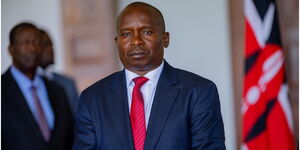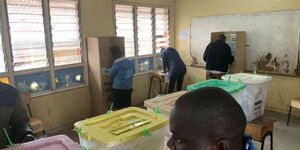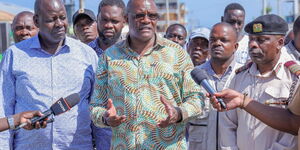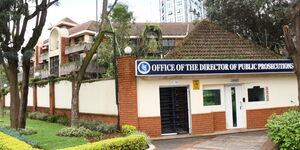Kenya is poised to reach a historic milestone with Africa's first stadium featuring a retractable roof upon the completion of the multi-billion shilling Talanta Stadium.
During an update on the construction of the Ksh44 billion stadium on Thursday, September 11, Interior Principal Secretary Raymond Omollo shared that the roof will make the stadium a vibrant hub for community activities.
A retractable roof at the stadium set to host the 2027 African Cup of Nations (AFCON) offers numerous advantages, including increased versatility, an improved spectator experience, higher revenue potential, better natural playing conditions, and greater energy efficiency.
Unlike a fixed roof, a retractable roof can be easily opened or closed based on current conditions.
Such a roof would turn the stadium into a flexible, multi-purpose venue, capable of hosting concerts, cultural festivals, exhibitions, and national celebrations. With the ability to hold a broader variety of events year-round, operators can boost revenue.
Additionally, the quick-open feature minimises event cancellations or interruptions caused by sudden weather changes, such as rain, snow, or high winds. This offers fans, performers, and organisers planning certainty and helps prevent lost ticket sales.
In terms of spectator experience, a retractable roof allows operators to open it on sunny, mild days for an outdoor feel and close it during adverse weather. Conversely, keeping the roof closed can amplify crowd noise, enhancing the energy during sporting events.
For playing conditions, retractable roofs are crucial in modern stadiums with natural grass pitches, helping maintain a healthy surface. They can be opened to let in sunlight and fresh air or closed to shield against harsh weather. This reduces reliance on artificial turf, common in older indoor stadiums.
When open, the roof offers optimal natural lighting for the field. If parts of the pitch remain shaded, supplemental grow lights can be used to promote turf growth.
How the Retractable Roof is Being Constructed
PS Omollo also revealed that the roof's construction was supported by a computerised hydraulic tension cable lifting system, an engineering marvel rarely seen worldwide.
He emphasised that this lesser-known technology played a vital role in the assembly of the stadium’s retractable roof.
According to PS Omollo, only four stadiums across the globe have this feature, with Kenya set to become the fifth nation to adopt it ahead of the 2027 African Cup of Nations (AFCON). However, research shows that at least eight stadiums globally have this technology, with more than four countries utilising it.
A computerised hydraulic tension cable lifting system is a sophisticated engineering setup used for constructing or operating large stadium roofs. It combines powerful hydraulic jacks with a network of high-strength steel cables.
A computer control system, acting as the "brain", precisely synchronises the jacks and constantly monitors cable tension and positioning to ensure safety and accuracy.
This system allows the entire roof to be assembled on the ground, greatly cutting down on labour costs and construction time.
Once assembled, it lifts the roof into place and finely tensions the cables to ensure the roof's stability. This "big lift" method is typically used for initial construction, not routine operation.
Other features of the stadium include seven changing rooms, VIP lounges, modern locker rooms, advanced media centres, VAR booths, and goal-line technology, making it fully prepared for high-profile matches and seamless live broadcasts. It is expected to be completed in December this year or early 2026.












